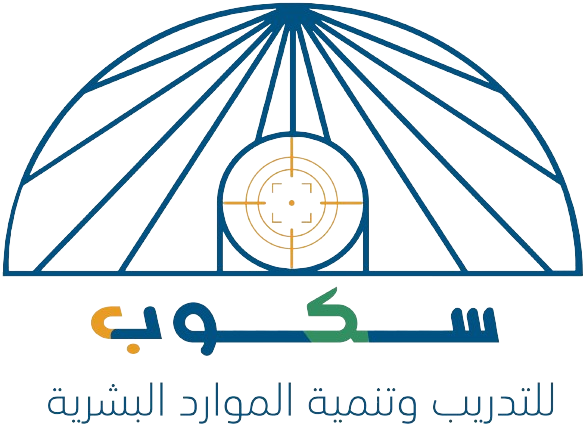Principles of Human Resources Management
About this course
The Human Resource Management Foundations and Principles program is a training program designed to teach individuals the skills and knowledge needed to effectively manage the workforce in organizations and companies. These courses cover a wide range of topics related to employee management, from recruitment and selection processes to performance appraisal and skills development.
The course is accredited by the General Organization for Technical and Vocational Training and the National Center for E-Learning.
Accreditation number: 57824812
About this course
- The Human Resources Management course aims to provide trainees with comprehensive skills and knowledge that enable them to manage the workforce effectively and efficiently. Here are some of the detailed objectives that the course seeks to achieve:
- Understanding the basics
- Definition of Human Resources Management: Understanding the comprehensive concept of human resources management and its strategic role in achieving the organization's goals.
- Basic principles: Identifying the basic principles and values on which human resources management is based, such as justice, equality, and respect for human rights.
- Main functions: Identifying the main functions of human resources management, such as recruitment, training, performance evaluation, and industrial relations.
- Planning and strategy
- Workforce planning: Learning how to plan the organization's human resources needs in the short and long term.
- Job analysis: The ability to analyze different jobs and identify the skills and competencies required for each job.
- Job description: Preparing an accurate job description for each job that includes the responsibilities, duties, and qualifications required.
- Recruitment and selection
- Recruitment processes: Identifying the various stages of the recruitment process, from identifying needs to the job offer.
- Applicant evaluation: Using effective assessment tools such as interviews and tests to identify the best candidates for the job.
- Selection and recruitment: Making the final decision on selecting the right candidate and making the job offer.
- Training and Development
- Identifying training needs: Identifying training needs of employees based on performance evaluation and organization goals.
- Designing training programs: Designing effective training programs that meet employee needs and contribute to developing their skills.
- Evaluating training: Evaluating the effectiveness of training programs and measuring their impact on employee performance.
- Performance evaluation
- Performance appraisal systems: Identifying different performance appraisal systems and choosing the appropriate system for the organization.
- Conducting performance appraisal interviews: Conducting performance appraisal interviews effectively and providing constructive feedback to employees.
- Preparing development plans: Preparing individual development plans for employees based on performance appraisal results.
- Incentives and rewards
- Designing incentive programs: Designing effective incentive programs to motivate employees and improve their performance.
- Wages and benefits management: Managing the wage and benefits system in a fair and equitable manner.
- Employee relations and employee affairs
- Employee relations and employee affairs
- Conflict management: Dealing with labor disputes and resolving them peacefully.
- Collective negotiations: Participating in collective negotiations with worker representatives.
- Contemporary issues
- Diversity and inclusion: Creating a diverse and inclusive work environment for all employees.
- Technology in Human Resources: Using modern technology in human resource management, such as human resource management systems (HRIS).
- Sustainability in Human Resources: Integrating sustainability principles into human resource management practices.
- In addition to these objectives, the course also aims to:
- Develop personal skills: such as communication, negotiation, problem solving, and leadership.
- Enhance professional competencies: such as data analysis, decision making, and time management.
About this course
- Axis 1: Introduction to Human Resources Management
- Theoretically:
- Lectures on the concept of human resources management and its development.
- The importance of human resources management in achieving the organization's goals.
- The main functions of human resources management.
- Practically:
- A case study of the success and failure of companies in the field of human resources management.
- A group discussion on the challenges facing human resources management in the Arab world.
- A presentation on the role of leadership in human resources management.
- Axis 2: Human Resources Planning
- Theoretically:
- Analyzing future workforce needs.
- Building recruitment and training plans.
- Planning for career succession.
- Practically:
- Building a workforce planning model for a fictitious company.
- Analyzing different jobs and identifying the required skills.
- Designing a program to train future leaders.
- Axis 3: Recruitment and Selection
- Theoretically:
- Different sources of recruitment.
- Applicant evaluation methods.
- Conducting personal interviews.
- Practically:
- Writing an attractive job advertisement.
- Conducting a mock interview with a job applicant.
- Analyzing resumes and evaluating applicants.
- Axis 4: Training and Development
- Theoretically:
- Identifying training needs.
- Designing training programs.
- Evaluating the effectiveness of training programs.
- Practically:
- Building an individual training plan for a fictitious employee.
- Designing a short training workshop.
- Evaluating an existing training program in the company.
- Axis 5: Performance evaluation
- Theoretically:
- Different performance evaluation systems.
- Conducting performance evaluation interviews.
- Preparing individual development plans.
- Practically:
- Building a model for evaluating employee performance.
- Conducting a fictitious performance evaluation interview.
- Preparing a development plan for an employee who received a less than expected evaluation.
- Axis 6: Incentives and rewards
- Theoretically:
- Incentive theories.
- Designing incentive programs.
- Managing wages and benefits.
- Practically:
- Designing an incentive system for company sales.
- Comparing different wage systems.
- Calculating the cost of employee benefits packages.
- Axis 7: Industrial relations
- Theoretically:
- Collective negotiations.
- Managing labor disputes.
- Labor legislation.
- Practically:
- Simulating a collective bargaining between company management and workers.
- Resolving a fictitious labor dispute.
- Case study of a work accident and analyzing responsibilities.
- Axis 8: Contemporary Issues in Human Resources Management
- Theoretically:
- Diversity and Inclusion in the Workplace.
- Artificial Intelligence in Human Resources.
- Remote Work.
- Practically:
- Group discussion on the impact of technology on the future of work.
- A case study analysis on implementing a diversity policy in a company.
- Designing a questionnaire to measure the satisfaction of remote employees.
About this course
After completing the Human Resources Management Fundamentals and Principles Program, you will be able to:-
Apply modern technologies in the field of human resources.
Organize the management of human resources business.
Deal with individuals from inside and outside the organization according to sound scientific methods.
Participate in the management of the organization's human resources.
Apply computer applications and programs in human resources using computers.
Distinguish the basic concepts of total quality management.
Manage working time to ensure its efficient use.
A deep understanding of human resources management concepts, including the basic principles, theories and tools used in this field.
Communicate effectively with employees at all levels, as well as with senior management and colleagues.
Lead and manage teams effectively, motivate employees and direct them towards achieving the organization's goals.
Use data and information to make strategic and tactical decisions in the field of human resources management.
Negotiate effectively with stakeholders and solve problems and conflicts that may arise in the work environment.
Understand legislation and policies, including labor laws and legislation related to human resources and the ability to apply them correctly.
Analyze the need for training and design development programs to enhance employee capabilities and achieve the organization's goals.
Enhancing employee satisfaction and engagement by implementing best practices in labor relations management and developing a positive work environment.







